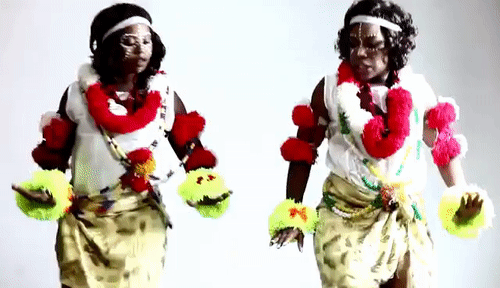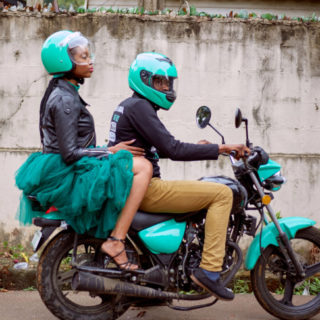It’s 2019 and the world seems to finally be getting the drift; Nigerians love to dance. You can see it everywhere; Jidenna has been promoting his new album by grinding on people’s girlfriends. Zlatan’s signature move, the Zanku has travelled farther than the artist himself.
Check any Nigerian’s Instagram Stories during the weekend and you’ll see their home training in the wind. Sure, it’s part of a big picture; Nigerian culture is super cool now and more people are paying attention. But if you thought we just started to gbe body in the internet age, you thought wrong.
Dance has always been a big part of our culture. Nigerians have been getting down since before Lord Lugard forced our unholy marriage. And whether we were dancing to solve our problems (more on this later) or trying to communicate with gods, we were doing some pretty lit moves. Here’s proof.
- The Etighi

Iyanya may have brought it to the dance floor with “Kukere”. But long before his biceps grew too big for his body, the Efik & Ibibio people of Nigeria’s Niger Delta had been getting down Etighi-style for centuries. The
Bells around their waists make a jangling sound that adds more special effects to the performance. To dance the Etighi, you need to be flexible and you’ll probably think you are, until you see how traditional Etighi dancers move their waists like they have no bones. Plus they always have smiles on their faces, which makes everything much better.
- The Oghogho

No, it’s not a dance style created by the ancestors of Ogogo, the Nollywood actor. The Oghogho dance is native to the people of the ancient Bini kingdom. If you were expecting some spiritual undertones, you expected right. The Oghogho was performed strictly by the physician-caste and used to ward off evil omens and avert disasters.
Dancers,
- The Koroso
Forget their conservative reputation. The Fulani people of Northern Nigeria have some of the most dramatic dances you’ve ever seen and the Koroso, which is still very common today, is probably the best example. The name comes from the rattling beads that dancers wear around their waist and ankles as they perform acrobatic moves to music from flutes and drums.
Koroso dancers perform in pairs, mostly because they tend to need help to contort their bodies in weird shapes. Sometimes though, you can catch the dancers trying to outperform one another, a sight which makes for some great viewing.
- The Bata
If you’re Yoruba, odds are you’ve attempted the Bata dance at least once in your lifetime, which is amazing considering that the dance move originated as a sacred ritual for Sango, the god of war & thunder.
Bata dancers make very elaborate, fast-paced movements to the rhythm of music produced from three or four drums. Yoruba people often speak of the relationship between Bata dancers and the drums as sacred. And nothing makes it better than dancers who also know how to do
- The Ikprikpi-Ogu (Or Ohafia War Dance)
The Igbo people of Eastern Nigeria are known for many things; Alaba International Market, pounding fufu and an insane level of defiance. That probably explains why they created an entire dance move to welcome warriors from battle.
The Ikpirikpi-Ogu was performed by bare-chested men who would stomp and flex their muscles in an intoxicating show of strength. There aren’t many wars of that kind anymore, but the dance is kept alive by age-groups who perform it to show off their strength and machismo. Ooomph for the mandem!
- The Atilogwu
How do we say this? If you’re Nigerian and you don’t know the Atilogwu, you dun know
And it’s not hard to see why; Atilogwu dancers spend a fair share of their time on other people’s shoulders, leaping, twisting and jumping to music from local instruments. It’s lit to watch.
Did you enjoy this? You should sign up for our weekly pop culture newsletter, Poppin’. You’ll get to know what we’re up to before anyone else + insider gist, reviews, freebies and more. If it sounds like your deal, sign up here.




